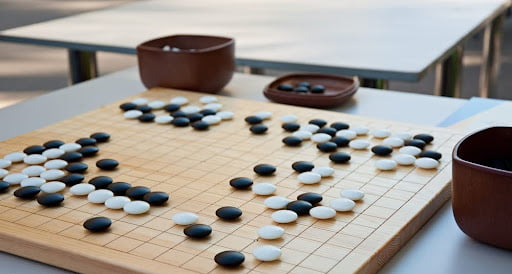Symbols of Birth and Life in Chinese Culture
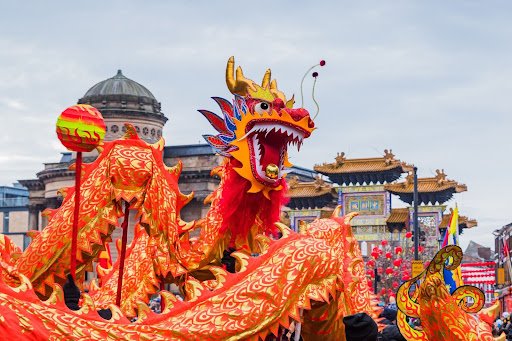
When it comes to Chinese traditions, symbols play an integral role in conveying the philosophical underpinnings and values that have been passed down through generations. The traditions and customs of China are steeped in symbolism, particularly when it comes to representing concepts of birth, life, and the continuous cycle of renewal.
These symbols, deeply embedded in the culture’s art, literature, and daily practices, offer a window into the soul of Chinese society, reflecting its hopes, dreams, and reverence for the natural and spiritual worlds. In this blog post, we will explore the many profound symbols of birth and life in Chinese culture, unraveling their meanings and significance.
Related Reading: Exploring the Symbols and Rituals of Chinese Death Customs
Lotus flower (莲花) — A symbol of purity and rebirth
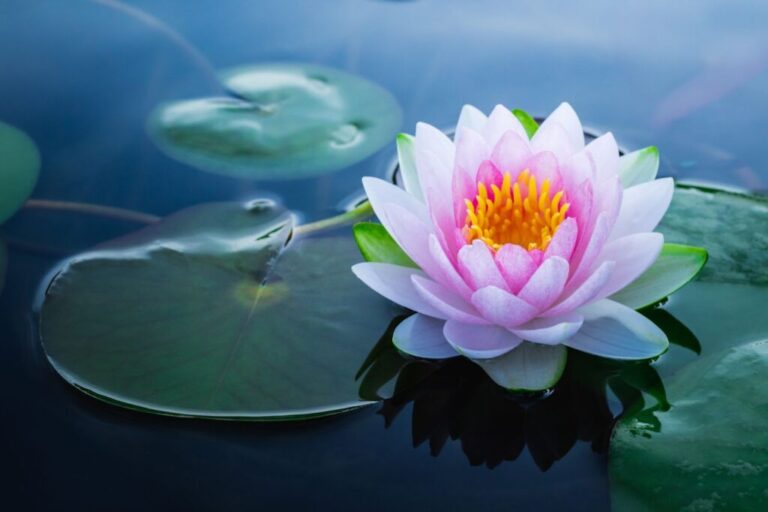
Regarding symbols of birth and life in Chinese culture, the lotus flower stands out for its unparalleled beauty and profound spiritual significance. This emblem of purity, enlightenment, and rebirth is deeply entrenched in the traditions and customs of China, embodying the purity of the heart and mind amid adverse conditions.
The lotus flower serves as a powerful metaphor for the human condition — emerging unscathed and beautiful despite the challenges of life.
The significance of Chinese traditions
The lotus flower is revered across various aspects of Chinese traditions, from art and poetry to religious ceremonies and festivals. Its ability to rise from the mud, bloom out of the darkness, and radiate into the world is a journey of spiritual awakening and the triumph of the spirit. This process mirrors the core values of resilience, purity, and the continuous pursuit of perfection central to the traditions and customs of China.
Symbolism in art and literature
Art and literature are the vessels through which the symbolism of the lotus flower is most vividly conveyed. In Chinese paintings and poetry, the lotus is often depicted as a throne for divine figures, highlighting its association with purity and divinity. The flower’s stages of growth – from bud to bloom – symbolize the spiritual journey from ignorance to enlightenment, making it a cherished motif in the symbols of birth and life in Chinese culture.
Dialogue example:
English: Look at the lotus flowers, how they rise above the water, clean and untouched.
Pinyin: Kàn nàxiē liánhuā, zěnme cóng shuǐ lǐ shēng qǐ, gānjìng bù rán.
Chinese: 看那些莲花,怎么从水里升起,干净不染。
Related Reading: The 10 Biggest Challenges for Chinese Learners SOLVED
Dragon (龙) – The power of life and good fortune
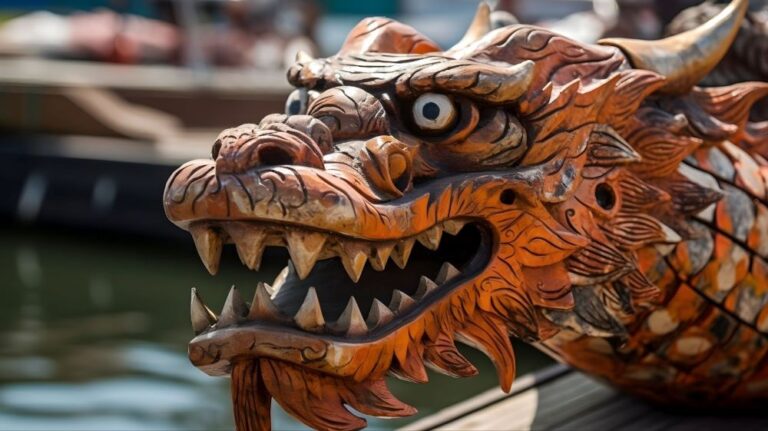
The dragon, a legendary creature embodying strength, wisdom, and auspicious power, is a cornerstone among the symbols of birth and life in Chinese culture. Unlike its Western counterparts, the Chinese dragon is seen as a benevolent creature, bringing prosperity, good luck, and rain for crops. Its image is omnipresent in the traditions and customs of China, symbolizing the dynamic spirit of the Chinese people and their deep connection to the natural and mystical worlds.
The dragon in Chinese traditions
The dragon stands as a symbol of the Emperor’s divine power and authority, reflecting society’s hierarchical and spiritual ideals. Festivals such as the Dragon Boat Festival (端午节) and Chinese New Year are imbued with the dragon’s energy through performances, decorations, and rituals, celebrating its role in bringing abundance and protection.
The dragon dance, a highlight of these celebrations, is performed to ward off evil spirits and attract good luck and health, demonstrating the integral role of this mythical creature in the traditions and customs of China.
Symbolism across various aspects of life
The dragon’s image adorns everything from architectural elements and royal insignias to everyday items, serving as a constant reminder of the power and potential for greatness and prosperity. Its association with water and rainfall links it to agriculture, underscoring the dragon’s importance in ensuring the survival and prosperity of the community. And, as a symbol of fertility and imperial power, dragons are often depicted with a pearl, representing wisdom, wealth, and the potential for life.
Dragons and the cycle of life
The dragon’s role in Chinese culture is also tied to its representation of the yang aspect of the yin-yang philosophical framework, embodying masculinity, activity, and the sun’s warmth. In weddings and celebrations related to birth and renewal, dragon imagery is prominent, signifying the wish for a strong, healthy, and prosperous life for the newlyweds or newborns.
Dialogue example
English: The dragon is not just a mythical creature; it’s a symbol of the Chinese spirit: resilient, noble, and benevolent.
Pinyin: Lóng bùzhǐ shì yī zhǒng shénhuà shēngwù; tā yě shì Zhōngguó jīngshén de xiàngzhēng: huángjīn, gāoshàng, hé réncí.
Chinese: 龙不只是一种神话生物;它也是中国精神的象征:坚韧、高贵和仁慈
Related Reading: 15 Chinese Words That Don’t Exist in English
Phoenix (凤凰) — Harmony and renewal
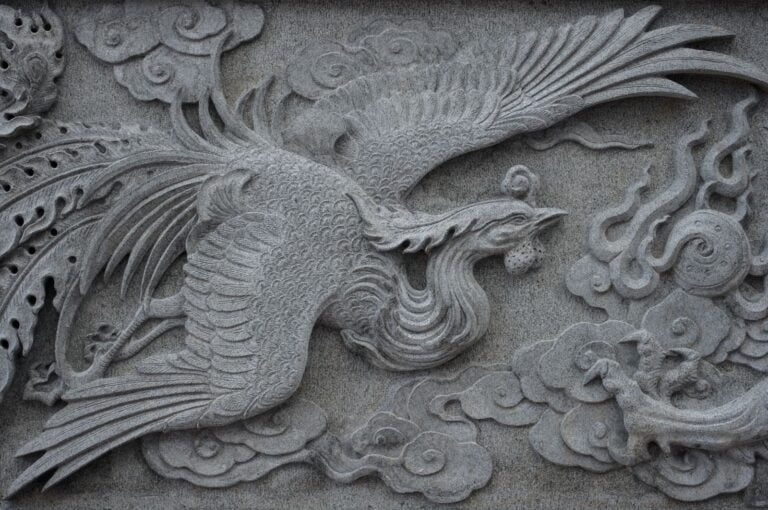
In Chinese, the phoenix, or Fenghuang, is a mythical bird that reigns supreme among the symbols of birth and life in Chinese culture. It is a creature of grace and majesty, embodying the harmonious blend of yin and yang and symbolizing the union of femininity and masculinity.
This mythical bird, with its vibrant feathers and captivating aura, represents renewal, transformation, and the cyclical nature of life and death, aligning closely with the traditions and customs of China.
The phoenix in Chinese traditions
The phoenix holds a revered place in the traditions and customs of China, often associated with the Empress in the same way the dragon represents the Emperor. It symbolizes high virtue, grace, and the prosperity of the realm.
The phoenix imagery is prominent in weddings and other ceremonies celebrating life and new beginnings, signifying the wish for harmony, happiness, and a balanced life. The presence of the phoenix, especially when paired with the dragon, amplifies the auspiciousness of the occasion, embodying the perfect union and mutual respect between feminine and masculine energies.
The symbolism of renewal and nobility
In Chinese art, the phoenix is depicted amidst flames or rising from ashes, illustrating its ability to renew itself and emerge stronger from adversity. This portrayal resonates with the core principles of resilience and rebirth central to the symbols of birth and life in Chinese culture. The phoenix’s return is said to herald a new era of peace and prosperity, making it a beacon of hope and renewal.
Cultural impact and reflections
The phoenix’s influence extends beyond simple symbolism. It is a part of Chinese society, influencing literature, art, architecture, and even fashion. Its image adorns temples, royal garments, and household items, reminding them of the enduring values and the cyclical nature of life.
Dialogue example
English: The phoenix embroidered on this banner represents transformation and the beauty of new beginnings.
Pinyin: Nǐ kàn dào zhè zhānzhī shàng xiùhuā de fènghuáng, biǎoshì zhuǎnhuàn hé xīn kāishǐ de měi.
Chinese: 你看到这幡帜上绣画的凤凰,表示转换和新开始的美。
Related Reading: How to Learn Chinese Characters in Seconds
Bamboo (竹) — Resilience and growth
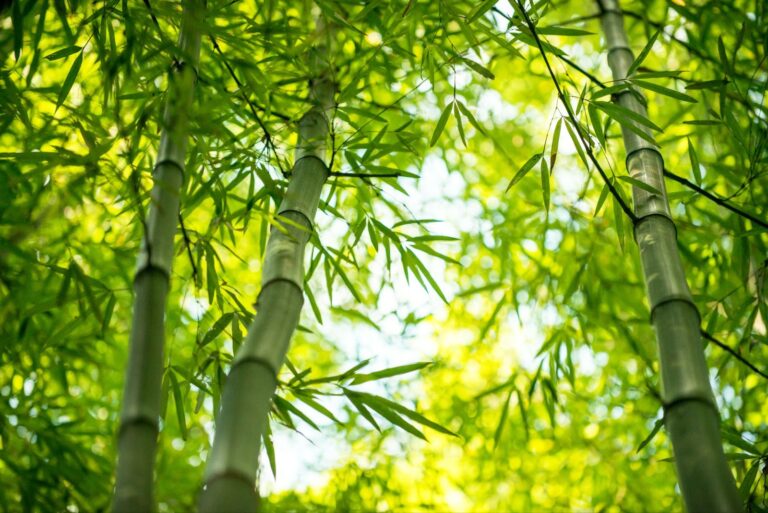
Bamboo holds a special place as a symbol of birth and life in Chinese culture. This plant is admired for its aesthetic appeal and deeply revered for its strength, flexibility, and rapid growth qualities that embody the resilience and enduring spirit of the Chinese people.
As a symbol, bamboo bridges the gap between the natural world and cultural practices, becoming a living embodiment of the traditions and customs of China.
Bamboo in Chinese traditions
In the traditions and customs of China, bamboo is a symbol of virtue, an example of integrity, and a lesson in humility. Its ability to bend without breaking mirrors the philosophical ideal of adapting to life’s hardships without losing one’s inner grace and strength.
In literature and art, bamboo is frequently depicted alongside plum blossoms, orchids, and chrysanthemums, forming the Four Gentlemen, each representing a season and a set of admirable traits. Bamboo, standing tall through the winter, symbolizes the ability to withstand adversity.
Symbolism and cultural significance
Bamboo plays a significant role in Chinese gardening and architecture, symbolizing growth, renewal, and the natural progression of life. Its uses are manifold, from construction material to a source of food and a medium for art (in the form of bamboo painting and carving).
Even the sound of the wind through a bamboo grove has inspired poets and musicians for centuries, becoming a metaphor for peace, tranquility, and the harmonious balance of life.
Reflections on daily life and philosophy
The qualities of bamboo are often cited in Chinese proverbs and teachings, emphasizing virtues like resilience, modesty, and inner strength. These qualities are integral to the symbols of birth and life in Chinese culture, guiding personal development and harmony with nature.
Dialogue example
English: Observe the bamboo, how it sways with the wind but never breaks. It teaches us the value of resilience.
Pinyin: Guānchá zhúzi, rúhé yǔ fēng yīqǐ huáidòng què cóng bù duànliè. Tā jiào huì wǒmen nàixìng de jiàzhí.
Chinese: 观察竹子,如何与风一起摆动却从不断裂。它教会我们耐性的价值。
Related Reading: 12 Traditional Chinese Games and Outdoor Activities
Peach (桃) — Immortality and vitality
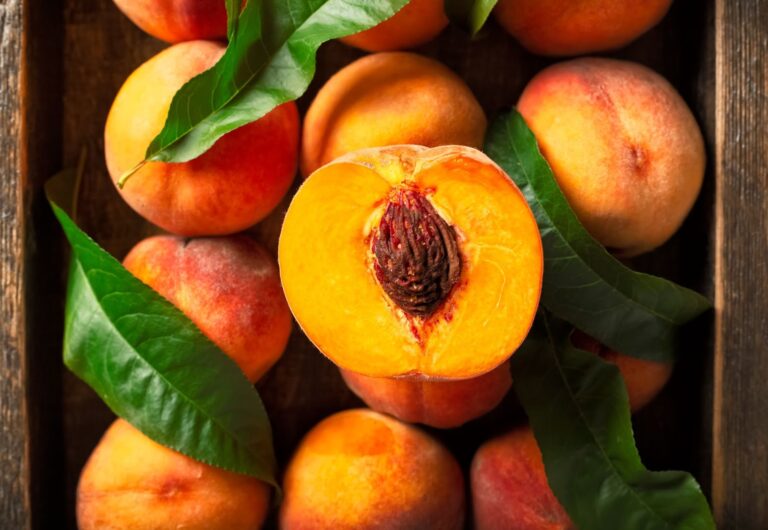
With its succulent fruit and vibrant blossoms, the peach holds a special place as a symbol of birth and life in Chinese culture. It epitomizes the quest for immortality and the celebration of life, deeply intertwined with the traditions and customs of China. In mythology, the peach is often associated with the gods and the pursuit of eternal life, illustrating the cultural longing for longevity and prosperity.
The peach in Chinese traditions
In China, the peach is more than a symbol of spring and renewal. It’s a powerful emblem of immortality and youthfulness. The legendary Peach Garden of the Immortals, where the gods feast on peaches of immortality, highlights the fruit’s significance in granting eternal life.
This myth permeates the traditions and customs of China, where peaches are often presented as gifts to wish someone a long and healthy life, especially during celebrations such as birthdays and the Chinese New Year.
Symbolism and cultural significance
The peach tree and its fruit are omnipresent in Chinese art and literature, embodying the harmony between man and nature and the cycle of life and renewal. Peaches are frequently depicted in paintings and poems, symbolizing nature’s protective and life-giving forces. The peach blossom is a potent symbol of love and romance, often used in decorations to attract luck in love and marriage.
The peach and the cycle of life
The symbolism of the peach extends to its role in rituals and celebrations related to birth and life. Red peaches, in particular, are seen as auspicious gifts that convey deep respect and wishes for longevity. Peach wood is also commonly used in traditional Chinese practices, believed to ward off evil spirits and bring peace to the household.
Dialogue example
English: The peach blossoms outside are in full bloom, reminding us of the renewal of life and the blessings it brings.
Pinyin: Wàimiàn de táohuā mǎnshēng kāihuā, tíxǐng wǒmen shēngmìng de gēngxīn hé tā dài lái de zhùfú.
Chinese: 外面的桃花满盛开花,提醒我们生命的更新和它带来的祝福。
Related Reading: 12 Chinese Songs That Can Help Improve Your Language Skills
Fish (鱼) — Abundance and prosperity
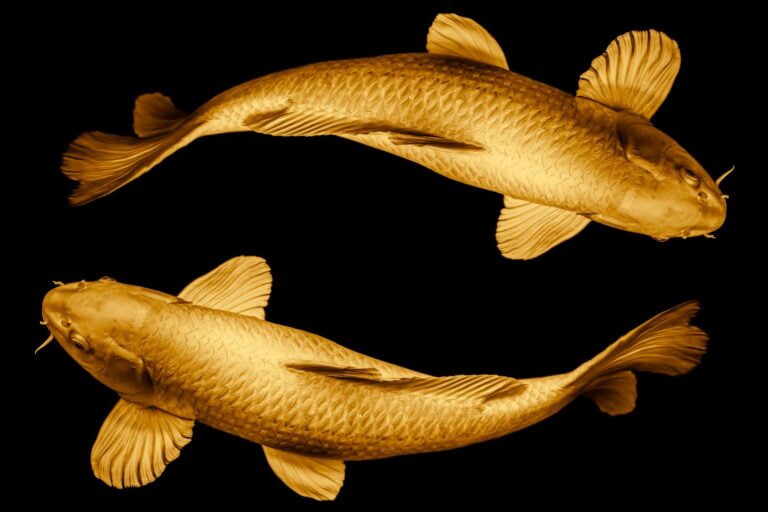
In Chinese culture, the fish is prominently featured as a symbol of abundance, prosperity, and fertility. The fish, with its endless variety and vital role in the ecosystem, captures the essence of life’s potential and the blessings of nature. The fish’s significance is deeply rooted in the traditions and customs of China, reflecting a profound respect for the harmony between humanity and the natural world.
Fish in Chinese traditions
Fish play a significant role in the traditions and customs of China, where they are often associated with wealth and plenty due to their prolific nature. The Chinese word for fish, 鱼 (yú), is a homophone for 余 (yú), meaning surplus or abundance.
This linguistic coincidence solidifies the fish’s status as a bearer of good fortune and a staple in celebrations, especially during the Chinese New Year and at many other Chinese festivals, where dishes featuring fish are served to wish for a year of prosperity and surplus.
Symbolism and cultural significance
Fish imagery is prevalent in Chinese art, where they symbolize a desire for wealth, happiness, and offspring. Carp, in particular, are admired for their strength and perseverance, embodying the qualities necessary to overcome obstacles and achieve success.
The famous legend of the carp leaping over the Dragon Gate and transforming into a dragon illustrates the theme of growth and transformation, resonating with the symbols of birth and life in Chinese culture.
The fish motif in celebrations and daily life
In addition to their symbolic presence in art and literature, fish are a common motif in decorations and gifts, especially during important life events such as weddings and birthdays. Fish-shaped ornaments or paintings are believed to attract the positive energies of prosperity and renewal to the household.
Dialogue example
English: Notice how we always have fish at our New Year’s feast. It’s a symbol of our wish for abundance in the coming year.
Pinyin: Zhùyì dào wǒmen zǒng shì zài xīnnián yàn shàng yǒu yú. Zhè shì wǒmen xīwàng láinián yǒu fēngshēng de xiàngzhēng.
Chinese: 注意到我们总是在新年宴上有鱼。这是我们希望来年有丰盛的象征。
Related Reading: Tips for a First-Time Visit to China
Eggs (蛋) — Fertility and new beginnings
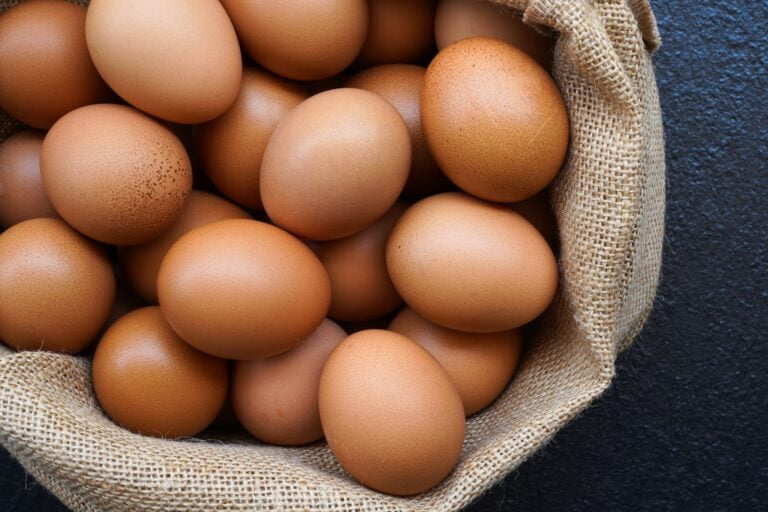
Eggs hold a universal symbolism of fertility, renewal, and the inception of life, but in Chinese culture, they gain additional layers of meaning. As one of the significant symbols of birth and life in Chinese culture, eggs embody the promise of new beginnings and the potential for growth and prosperity.
Eggs in Chinese traditions
In China, eggs play a pivotal role in celebrations of birth and renewal. A common practice is giving red eggs to guests during a baby’s first-month celebration, known as the Full Moon ceremony. The red symbolizes good luck and blessings, while the egg represents the beginning of life and potential.
This tradition highlights the community’s involvement in acknowledging and celebrating the arrival of new life, wishing the newborn health, prosperity, and longevity.
Symbolism and cultural significance
Beyond their role in celebrations, eggs symbolize fertility and the endless possibilities that new life brings. They’re often featured in various aspects of Chinese art and folklore, representing purity, the unity of life, and the essence of creation. The egg’s simple yet profound form serves as a cool metaphor for the mysteries of life and the potential contained within simplicity and humility.
The egg’s role in rituals and daily life
Eggs aren’t only present in rituals celebrating new life but are also a staple in the diet. Their inclusion in culinary traditions reflects the belief in their power to help build strength, health, and vitality. Plus, eggs are sometimes used in traditional Chinese medicine and rituals to cleanse and offer protection, further highlighting their significance as carriers of life and purity.
Dialogue example
English: We need to prepare red eggs for the celebration. They are a symbol of new life and good fortune for our child.
Pinyin: Wǒmen xūyào wèi qìngzhù zhǔnbèi hóngdàn. Tāmen shì xīnshēngmìng hé wǒmen háizi hǎoyùn de xiàngzhēng.
Chinese: 我们需要为庆祝准备红蛋。它们是新生命和我们孩子好运的象征。
Related Reading: How to Learn Chinese Easily
Pomegranate (石榴) — Fertility and Prosperity
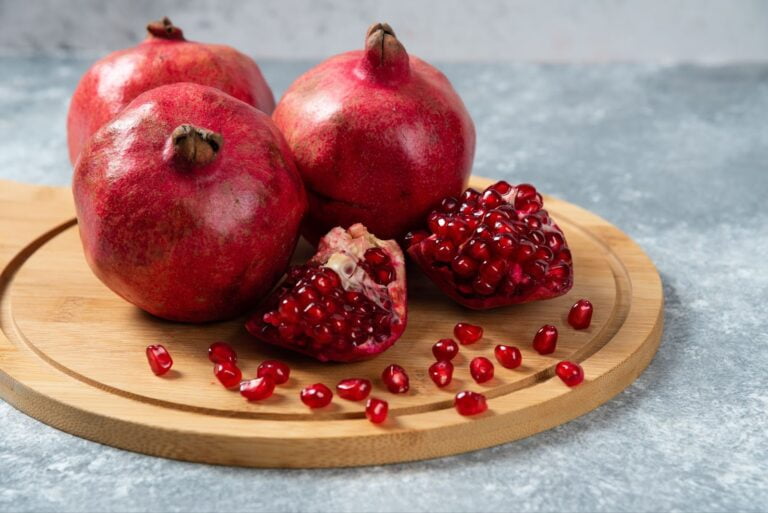
The pomegranate is a well-known symbol of fertility, abundance, and the blessings of many offspring in Chinese culture. This fruit perfectly encapsulates the essence of fertility and prosperity, making it a cherished addition to the symbols of birth and life in Chinese culture. The pomegranate’s significance is woven into the traditions and customs of China, celebrating the continuity of family and the hope for a fruitful future.
The pomegranate in Chinese traditions
The pomegranate stands out for its association with fertility and the wish for many healthy children. This symbolism is particularly poignant in wedding ceremonies and family celebrations, where the fruit is often featured as a motif in decorations and gifts. Its many seeds are seen as a metaphor for a prosperous family with numerous descendants, aligning with the cultural emphasis on the importance of lineage and the expansion of the family tree.
Symbolism and cultural significance
Beyond its role in celebrations, the pomegranate symbolizes unity and undying love in China. The fruit’s ability to hold countless seeds within a single skin is likened to a harmonious and tight-knit family filled with love and mutual support.
In art and literature, the pomegranate frequently appears as a symbol of wealth, good luck, and fertility, further cementing its place in the cultural consciousness as a bearer of positive blessings.
The pomegranate’s role in rituals and daily life
The consumption of pomegranates during important life events and festivals is believed to bring good fortune and health, particularly in terms of fertility and longevity. The fruit’s presence in the household is also thought to attract positive energies, ensuring a blessed and harmonious living environment.
Dialogue example
English: Let’s include pomegranates in our wedding decorations. They symbolize fertility and the wish for many children.
Pinyin: Ràng wǒmen zài hūnlǐ de zhuāngshì zhōng bāokuò shíliú. Tāmen xiàngzhēng zhe shēngzǐ hé xīwàng yǒu xǔduō háizi.
Chinese: 让我们在婚礼的装饰中包括石榴。它们象征着生育和希望有许多孩子。
Related Reading: 120 Basic Chinese Words and Phrases to Help You Survive
Discover the Soul of Chinese Culture: Your Journey to Mandarin Fluency Starts Here
Exploring the symbols of birth and life in Chinese culture reveals meanings and values deeply embedded in the traditions and customs of China. From the resilience symbolized by bamboo to the prosperity heralded by the dragon, these symbols offer a fascinating insight into one of the world’s oldest civilizations. They’re not just cultural icons but the very essence of Chinese identity, providing a vibrant backdrop to the language that has carried these traditions through millennia.
Understanding these symbols deepens your connection with the language, making your journey to Mandarin fluency not only about acquiring linguistic skills but also about immersing yourself in the heart of Chinese cultural heritage. It transforms language learning from a task into an enlightening journey, revealing the depth and beauty of Chinese traditions and customs.
Now imagine enhancing your Mandarin skills in a way that aligns with the rich cultural heritage of China, making every word and phrase you learn a step closer to true cultural fluency.
The FREE Mandarin Fluency Scorecard is your first step on this exciting journey. It’s designed to assess your current skill level and provide a personalized guide to achieving fluency, tailored just for you.
With the Mandarin Fluency Scorecard, you gain insight into your personal weaknesses and barriers to fluency, discovering the most effective next steps based on your current level. You’ll also get a custom report filled with immediate action steps, helping you progress faster and easier than ever before.
Fluency has never been more achievable.







